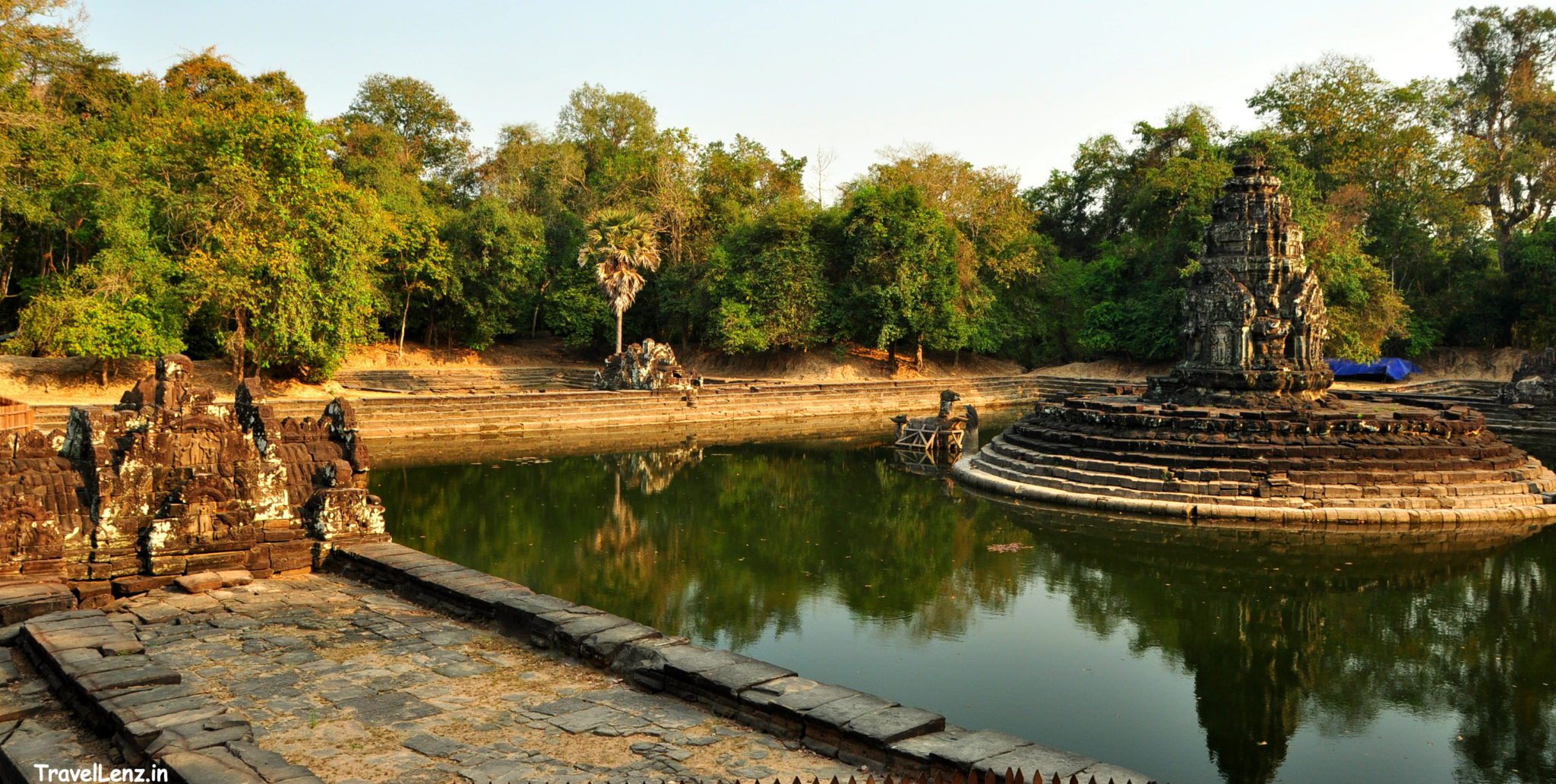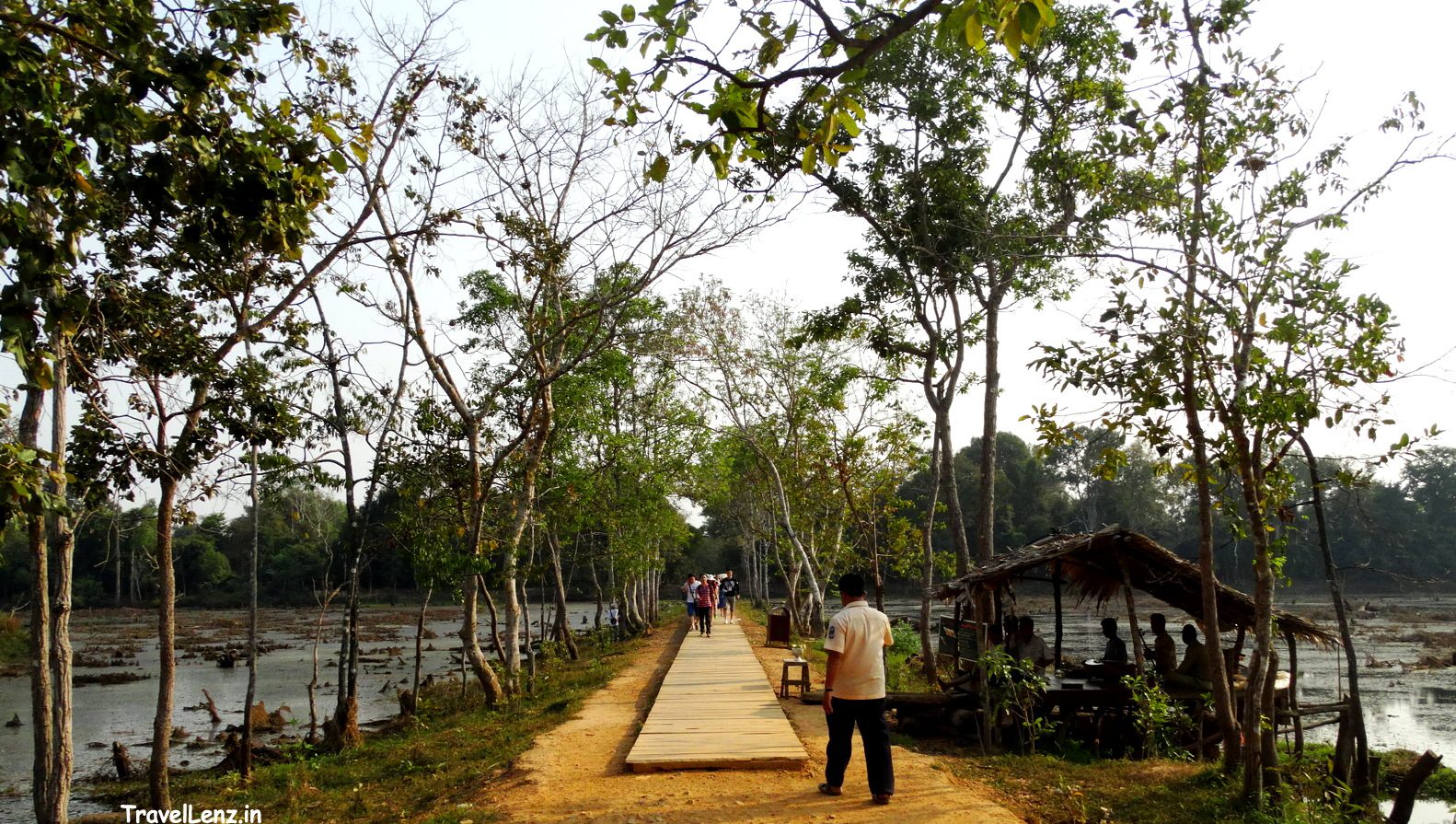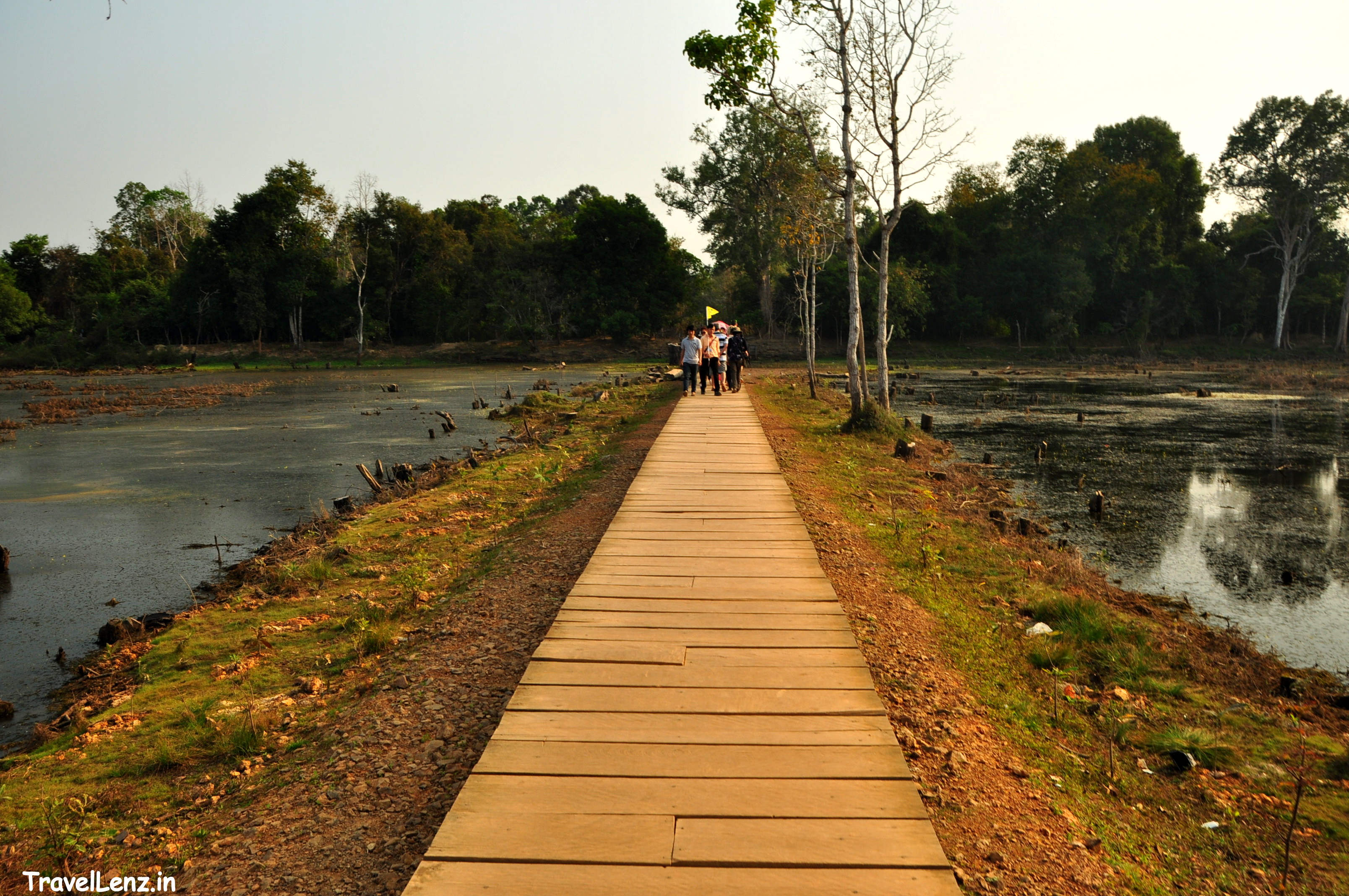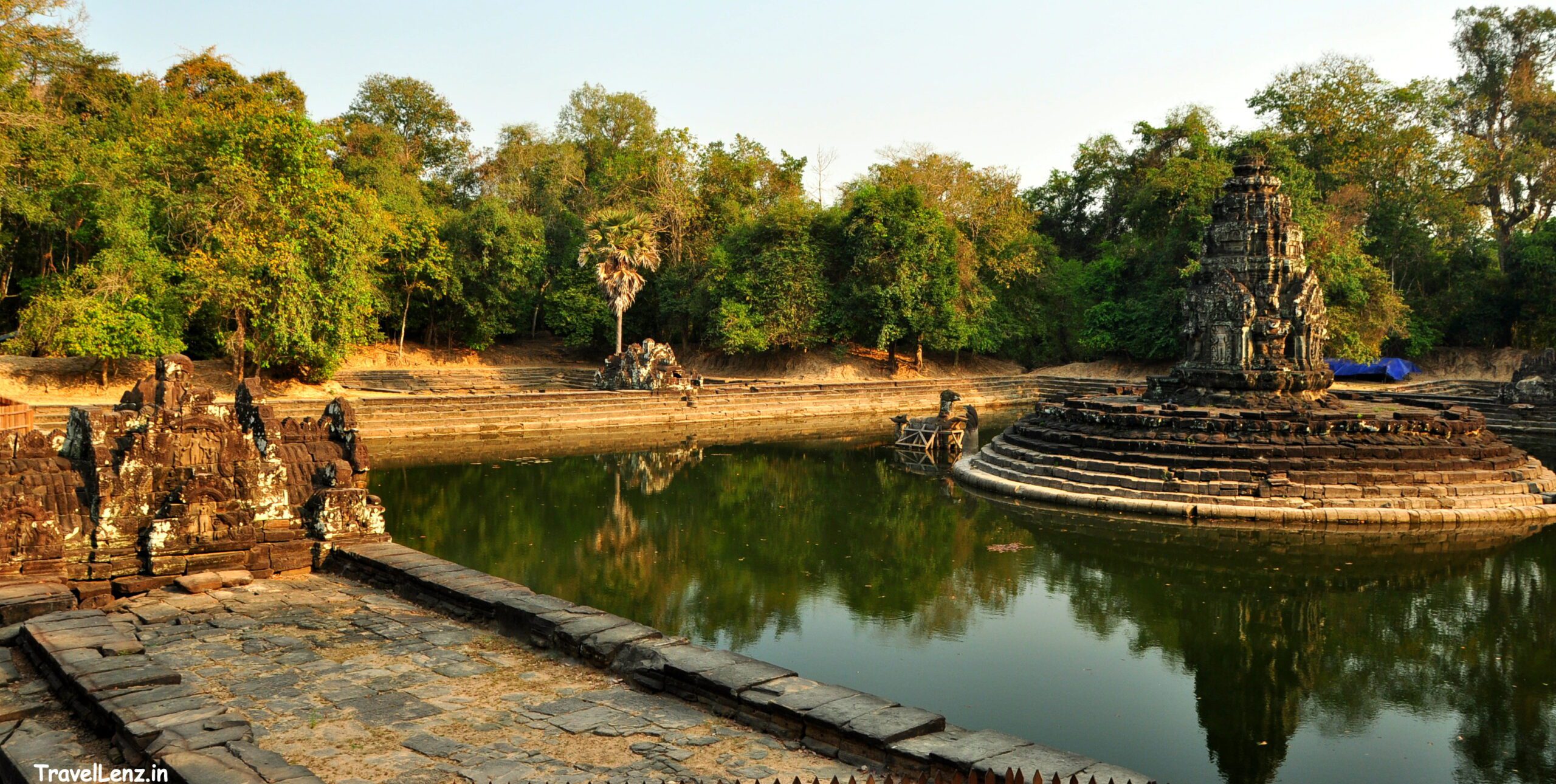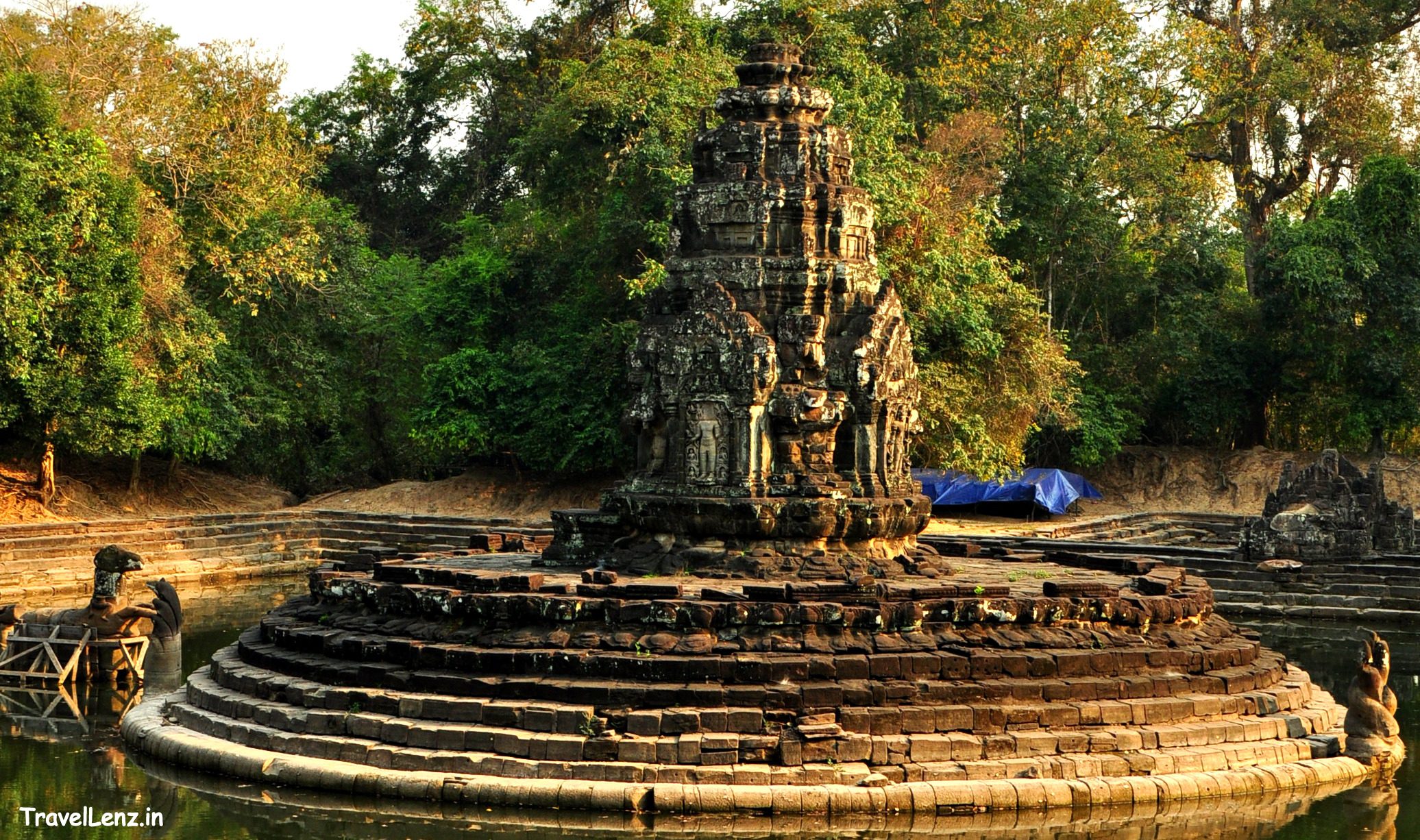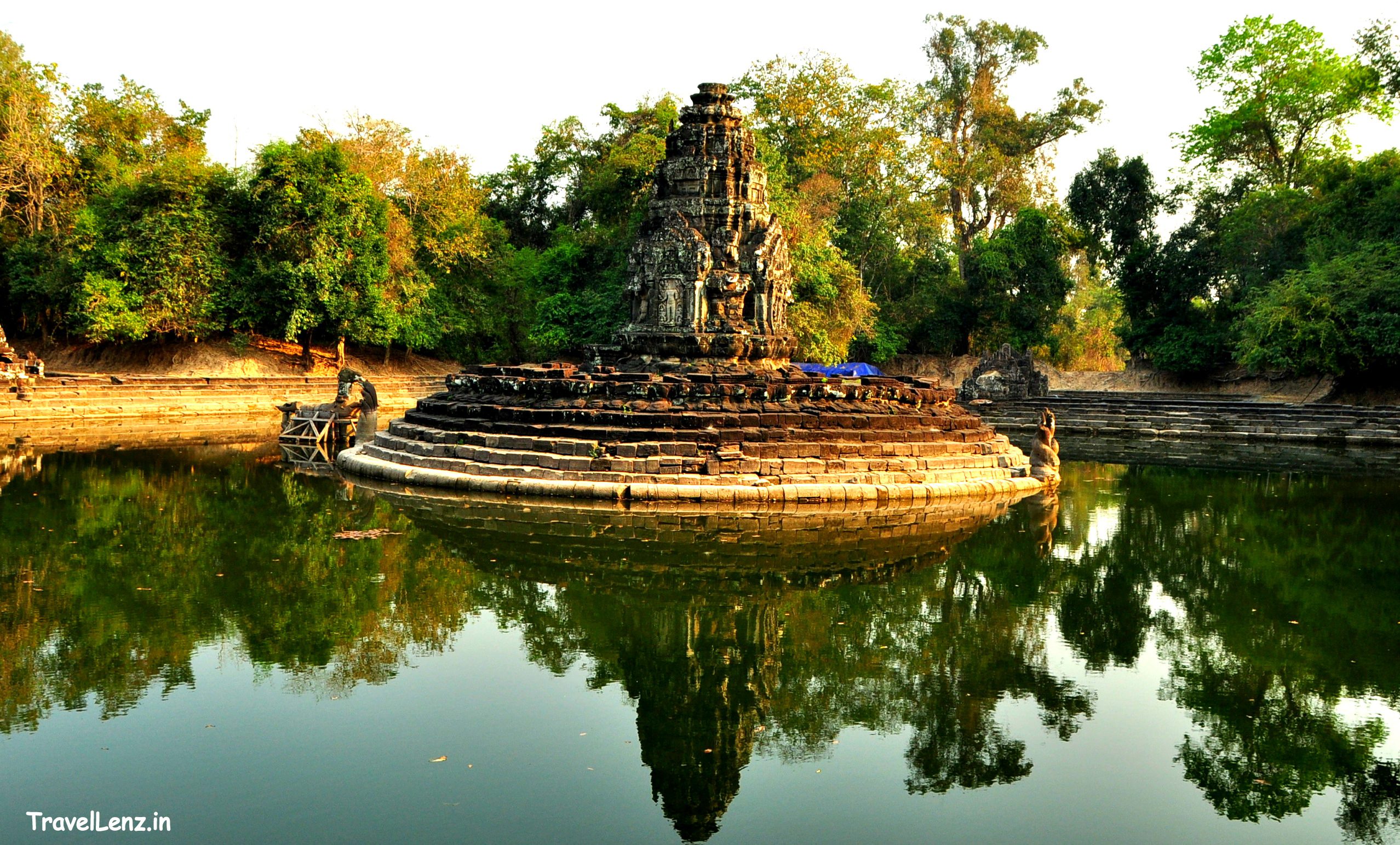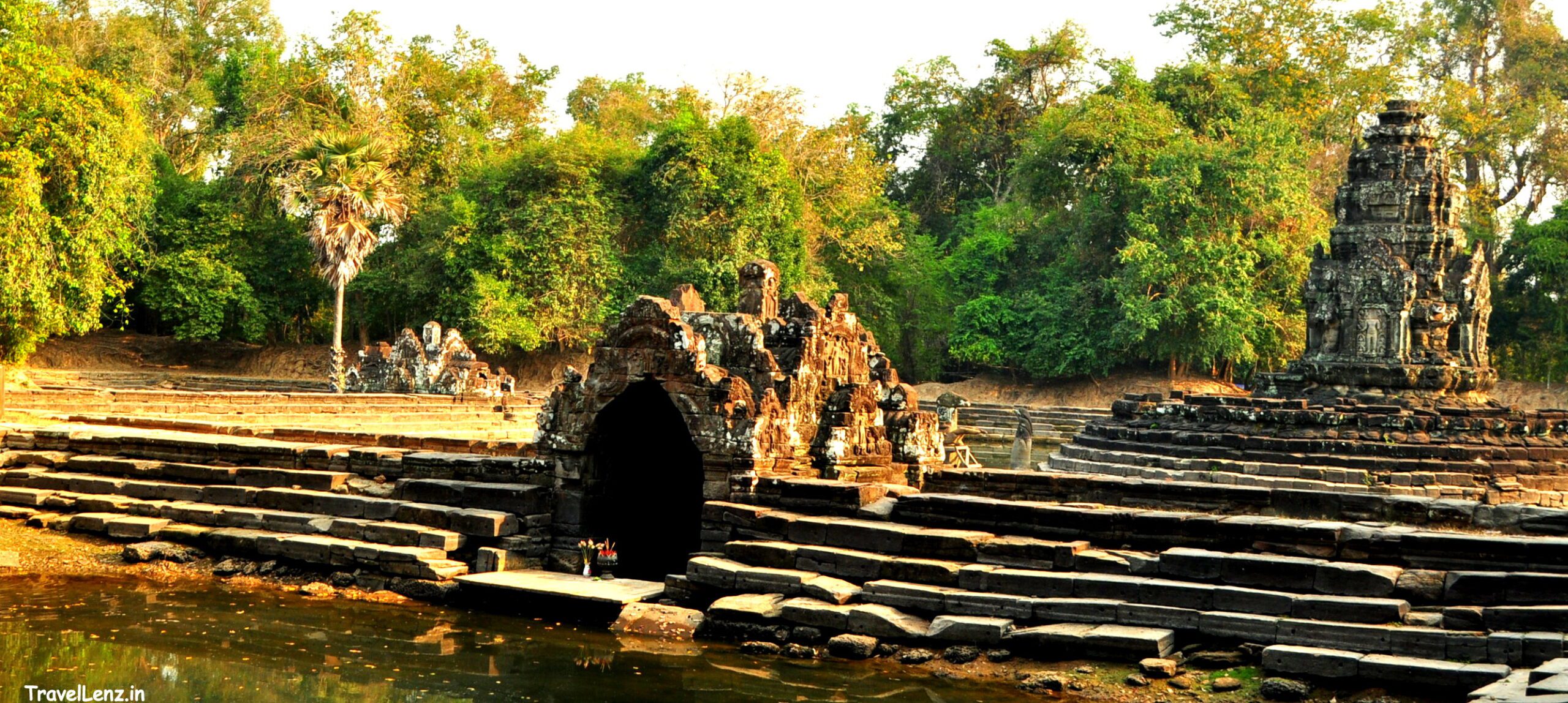Last Updated on May 21, 2021
In the last two days, we had climbed over a number of laterite steps, sandstone platforms and posed against a few apsaras. What we were about to visit was entirely different from what we had seen these two days. Neak Pean is an artificial island temple situated in the middle of the Northern Baray. The temple had a picturesque setting and consists of a central pond surrounded by four smaller ponds.
Read more: How we planned our four-day itinerary for Angkor Wat
The approach to Neak Pean
From the road to reach the temple, we had to walk over a wooden walkway. Tes said this path was always flooded during the rainy season.
On the way to the temple were a few musicians playing on instruments – a placard was written near them and it said they were war veterans. Cambodia is one of the worst affected by landmines planted during the war between Khmer Rouge and Vietnam. Several victims of the devastation are seen singing using traditional music at various temple sites and collect funds for rehabilitation.
Central pond and smaller ponds
The main temple is situated in the middle of the central pond. On the four sides are smaller ponds that are connected to the main temple by smaller connecting chapels. In each chapel, there was a different sculpted fountainhead – a King, an elephant, a lion, and a horse, though none of them was visible from where we stood. Each of the fountainheads spouted holy water, it is believed to cure all sorts of ailments. The four smaller ponds functioned as ablution ponds for pilgrims. Since we visited during the dry season, the fountains were dry.
Central sanctuary
The central sanctuary stands on a circular stone base that looked like two Naga snakes with their heads intertwined on one side and tails intertwined on the other. The temple derives its name from these entwined snakes – Neak Pean translates to “the entwined snakes”.
Originally the sanctuary had doors on each of the four cardinal directions. Now false doors are found instead that are adorned with large carved depictions of Lokeshvara,
the Bodhisattva of compassion. On the pediment over the East entrance is a depiction of the Buddha.
The flying horse – Balaha
On the left side of the main temple is a statue of a flying horse – Balaha -rising from the waters. Clinging to its tail are a group of men.
Tes told us a story from the Jataka tales – the story of Sinhala, a prince who led a group of sailors on a seagoing venture in search of precious stones. His ship was taken by storm and wrecked off the coast of an island. The sailors were welcomed by a group of celestial nymphs who lived on the island. The celestial nymphs took the men as their husbands.
One night Sinhala was warned by a magic lamp – that he and his fellow sailors were in danger. In reality, the nymphs were demonesses who were plotting to kill the men. The magic lamp also told them that a white-winged flying horse named Balaha, a form of the bodhisattva Avalokitesvara, would help the stranded sailors escape from the island. The sailors are seen clinging to the horse’s manes and tail, escaping from the waters.
The story of Balaha and the sailors are now immortalized in stone at a 12th-century temple in Angkor. Interesting story eh!! However, the story does not end here – Prince Sinhala later returned to the island and conquered it and established Buddhism. The island was named after the prince and is now known as Srilanka.
There was barely 2 hours for sun set and we had to catch its beauty from Phnom Bakheng, so we moved to our next destination.


